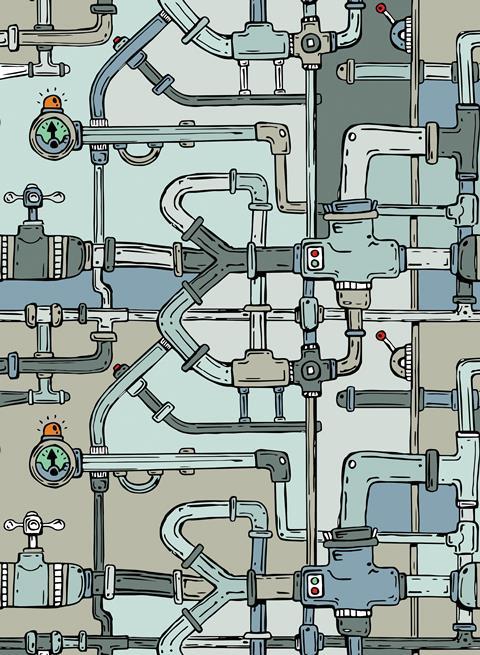Embracing flow chemistry means leaving behind some faithful friends

Readers of this column know a fine chemical plant’s faithful friends: its stirred tank reactors. While they are covered in steel and bristling with protrusions, they’re not too different from a laboratory chemist’s 3-necked flask. And while plant reactors have motor-driven agitators instead of enormous magnetic stirrer bars, the concept is the same: a container for running reactions in, with a tool to mix the chemicals. Reactants are fed in until the reactor is full, and the whole thing is heated or cooled to manufacture a new compound, then the product mixture is crystallised and filtered. Each batch is manufactured the same way, week in, week out. But there are other ways to make chemicals, beyond old-fashioned stirring.
My introduction to laboratory-scale flow chemistry came via ThalesNano’s H-cube – which will run hydrogenation reactions in a fume cupboard at temperatures and pressures that would, on a larger scale, require a concrete bunker or other heavy-duty shielding. Dissolve your compound in one flask, drop in a plastic line connected to a small pump, insert the right metal catalyst cartridge, and over an evening, the H-cube can reduce your compound with electrolysis-derived hydrogen, depositing the product in another flask. Anyone who’s ever struggled with a classic Parr shaker and its tremendously awkward glassware can see the advantages immediately.
High pressures and temperatures are not the only reason for considering flow chemistry. There are advantages for handling highly reactive and toxic reagents and intermediates, like diazomethane, that cause headaches in traditional batch manufacture: don’t feel like making it on 20 litre scale? How about manufacturing 100ml at a time, reacting it with a dissolved starting material and doing it all over again? Sure, you’ll only make 200g of product an hour, but you’ll be doing it safely. A continuous process gets around the problem by never accumulating large quantities of the dangerous intermediates. I have watched the two reactants pumped from 190 litre drums into a static mixer (a tube designed to thoroughly mix input streams) no larger than one litre. They reacted instantly before being cooled and peacefully flowing into another reactor. Considering this material had a reputation for violently polymerising and spewing toxic fumes, the work involved developing the flow process seemed well worthwhile.
If a computer is monitoring and controlling the synthesis, it’s a lot less likely that a pesky human will forget to turn on the reactor agitator or turn off the heater
But flow has its challenges as well. It can be difficult to determine starting or stopping conditions. I once watched a flow system that included three separate operations (introducing a slurried inorganic base, a reaction to produce an intermediate, and chemistry to integrate that into the product). Finding and balancing the exact conditions needed to keep all three working together – appropriate grinding of the solid base in the slurry; the right temperature to produce the intermediate at the required rate; and the speed of product filtration to remove solvent and impurities – adds an extra layer of complexity. While all of these aspects also need to be understood for a batch process, if one fails during a continuous process the others must also be stopped, or the products discarded.
While bulk processes like petroleum refining and petrochemicals production, and seemingly ‘low-tech’ industries like papermaking and water treatment have been running continuously for decades, the technology has so far made slow progress in fine chemicals manufacture. But that is changing. At the most advanced stages of the pharmaceutical industry, continuous manufacturing can potentially reduce the hazards and costs of manufacturing drugs. The US Food and Drug Administration sees it as a way to reduce batch variability – if a computer is monitoring and controlling the synthesis, it’s a lot less likely that a pesky human will forget to turn on the reactor agitator or turn off the heater. Perhaps those pesky humans can turn back to the laboratory – where modular, miniature flow reactors will sit beside the faithful three-necked flasks, awaiting their next bright ideas.












No comments yet